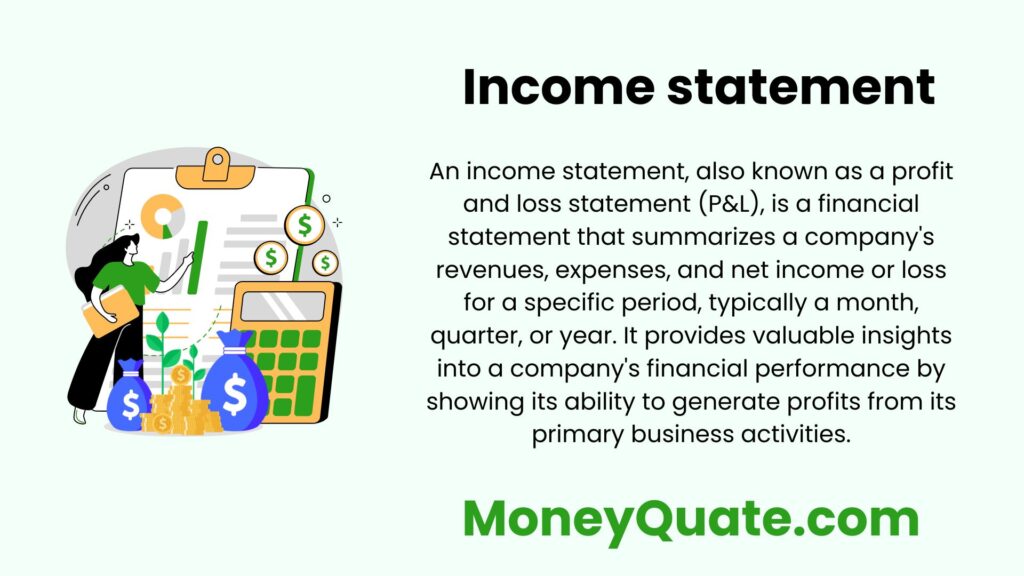The income statement, also known as the profit and loss statement, is a financial report that summarizes a company’s revenues, expenses, and profits over a specific period.
Contents
An Overview
The income statement provides stakeholders with a snapshot of a company’s financial performance during a specified period, typically quarterly or annually.
It helps investors, creditors, and management assess the company’s profitability and its ability to generate positive cash flows.

Components
- Revenues: The total amount of money earned from sales of goods or services during the reporting period.
- Expenses: The costs incurred in generating revenues and operating the business, including cost of goods sold, operating expenses, interest expenses, and taxes.
- Net Income (or Net Loss): The difference between total revenues and total expenses, representing the company’s profit or loss for the period.
Structure
- Gross Profit: Revenues minus the cost of goods sold (COGS), representing the profit from core business operations before deducting operating expenses.
- Operating Income: Gross profit minus operating expenses, such as salaries, rent, utilities, and marketing expenses.
- Net Income: Operating income minus interest expenses, taxes, and any other non-operating expenses or gains.
Key Metrics
- Gross Profit Margin: Gross profit divided by revenues, expressed as a percentage, indicating the proportion of revenue retained after accounting for the cost of goods sold.
- Operating Profit Margin: Operating income divided by revenues, indicating the profitability of core business operations.
- Net Profit Margin: Net income divided by revenues, representing the percentage of revenue that translates into profit after all expenses are deducted.
Analyzing the Income Statement
- Trend Analysis: Comparing income statements from different periods to identify trends in revenue growth, expense management, and overall profitability.
- Ratio Analysis: Calculating financial ratios, such as return on investment (ROI) and earnings per share (EPS), to assess the company’s financial health and performance relative to peers and industry benchmarks.
- Comparative Analysis: Benchmarking the company’s performance against competitors and industry averages to identify areas of strength and areas needing improvement.
Conclusion
The income statement provides a comprehensive overview of a company’s financial performance by summarizing revenues, expenses, and profits over a specific period. By analyzing the income statement, stakeholders can gain valuable insights into the company’s profitability, operational efficiency, and overall financial health.
1 thought on “Profit and Loss Essentials: Understanding the Income Statement”